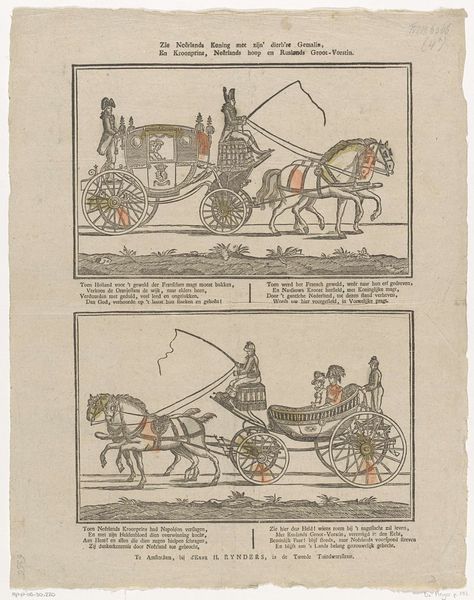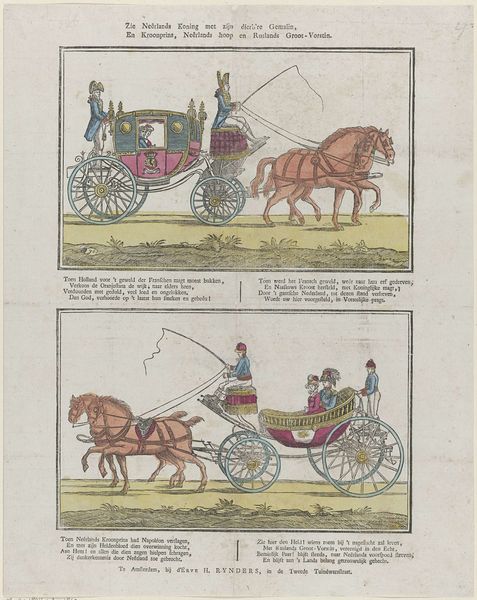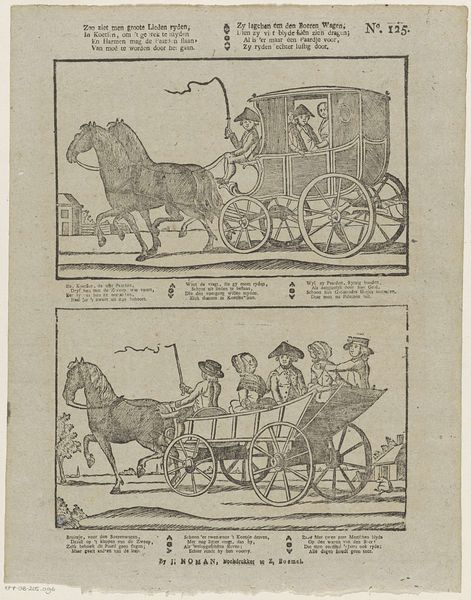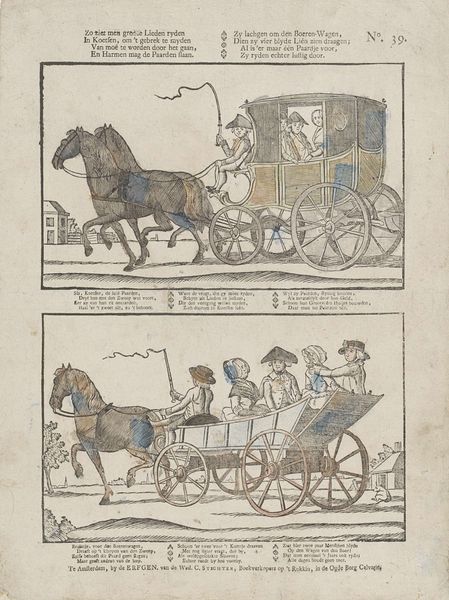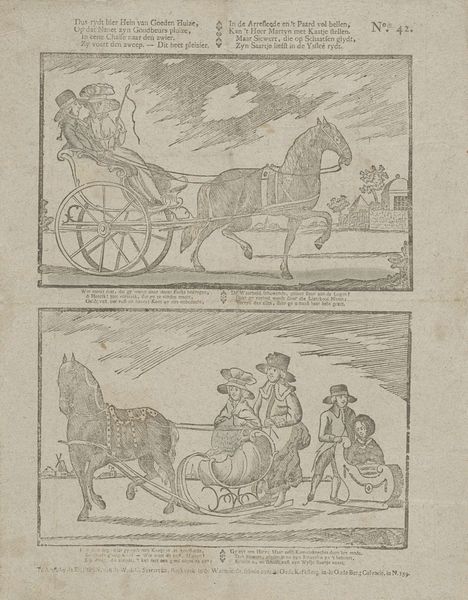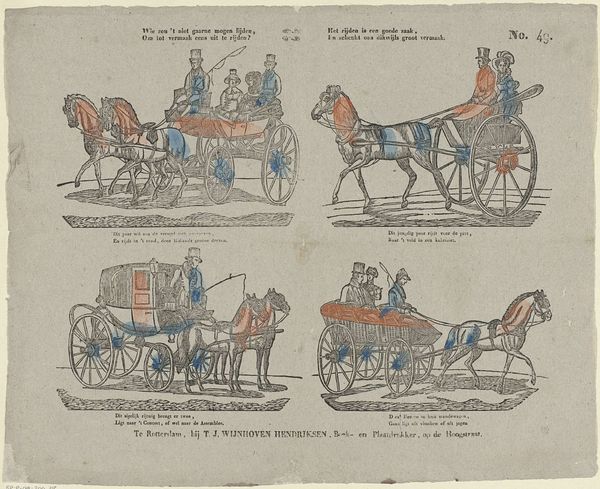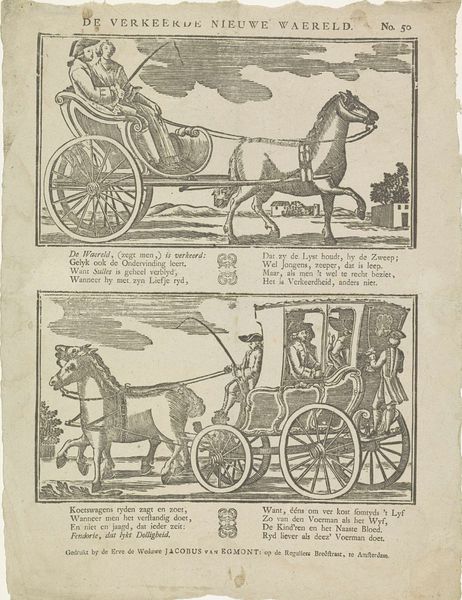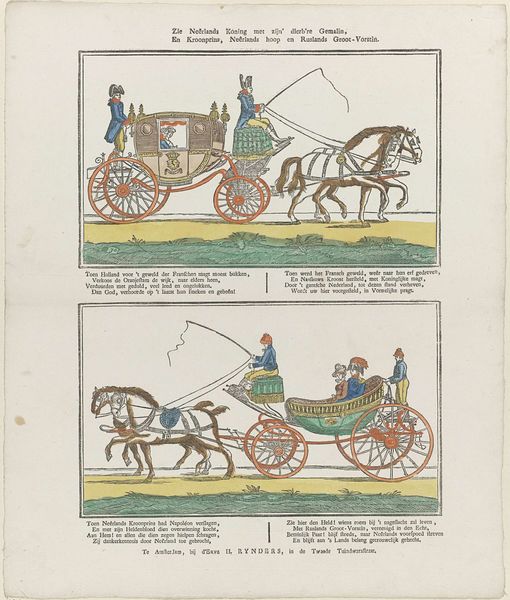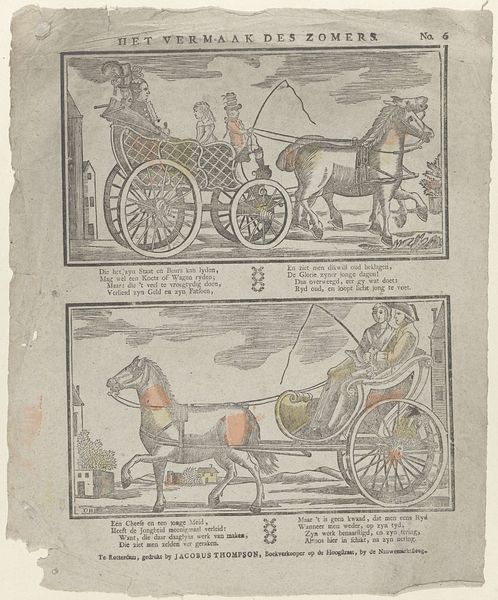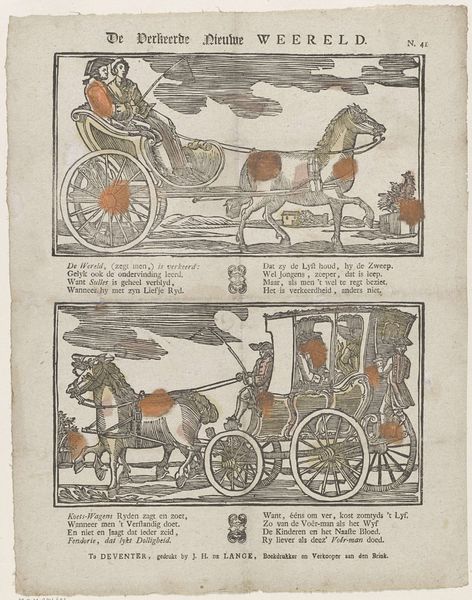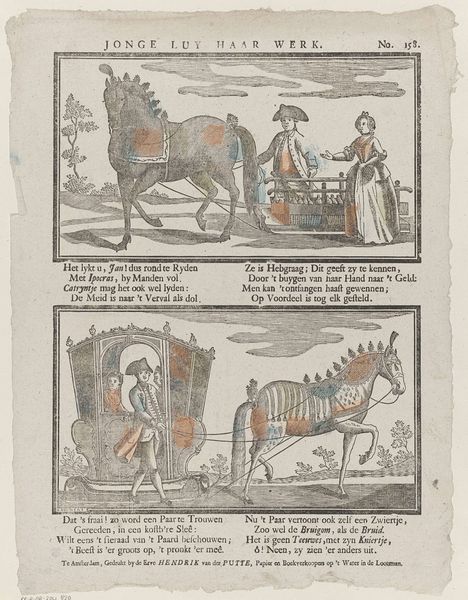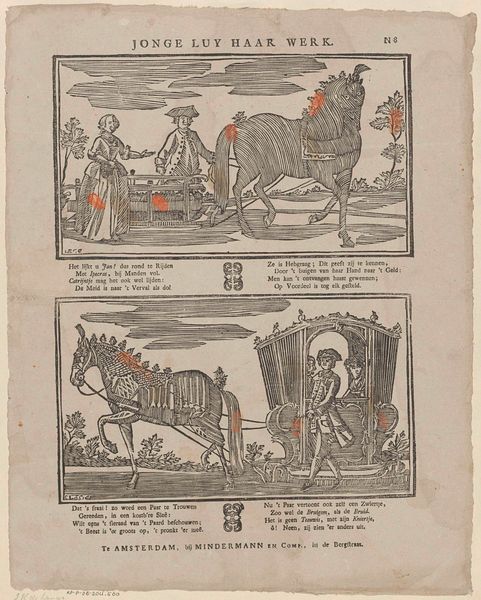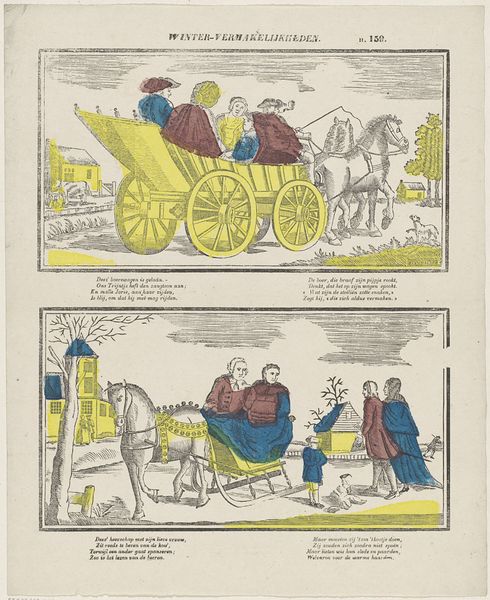![Dus rydt hier Hein van Goeden Huize, / Op dat Nanet zyn goudbeurs pluize [(...)] by J. Robyn](/_next/image?url=https%3A%2F%2Fd2w8kbdekdi1gv.cloudfront.net%2FeyJidWNrZXQiOiAiYXJ0ZXJhLWltYWdlcy1idWNrZXQiLCAia2V5IjogImFydHdvcmtzLzA0ZmE5MjA5LWRiNmEtNDBhOC1hNGUzLTk2NmM2ODlmNzhlZC8wNGZhOTIwOS1kYjZhLTQwYTgtYTRlMy05NjZjNjg5Zjc4ZWRfZnVsbC5qcGciLCAiZWRpdHMiOiB7InJlc2l6ZSI6IHsid2lkdGgiOiAxOTIwLCAiaGVpZ2h0IjogMTkyMCwgImZpdCI6ICJpbnNpZGUifX19&w=3840&q=75)
Dus rydt hier Hein van Goeden Huize, / Op dat Nanet zyn goudbeurs pluize [(...)] 1806 - 1830
0:00
0:00
drawing, print, engraving
#
drawing
#
narrative-art
# print
#
landscape
#
figuration
#
genre-painting
#
engraving
Dimensions: height 411 mm, width 336 mm
Copyright: Rijks Museum: Open Domain
Curator: This print, dating from 1806-1830, titled "Dus rydt hier Hein van Goeden Huize," really catches my attention because of its simple yet striking nature, created using drawing and engraving. I immediately get a sense of daily life depicted here; people enjoying carriage and sleigh rides. How might we begin to unpack this work? Editor: Well, given your expertise, what stands out to you about this piece beyond the surface-level depictions? Curator: As a materialist, I am interested in how this print reveals the social and economic conditions of its time through its very means of production and its depiction of leisure. We must ask: Who had access to these horse-drawn carriages and sleighs? How did the engraver, J. Robyn, create and circulate such images, and for what audience? Consider the labour involved in producing the print versus the labour represented within it – the implied wealth and privilege on display. Editor: That makes me think about the contrast between the lives of those being depicted and the artist. Did these prints serve to reinforce existing social hierarchies? Curator: Precisely. The act of creating and consuming this imagery further entrenches social divisions. This engraving likely targeted a middle or upper class audience able to afford such luxuries – reinforcing their status and aspirations. Note also the apparent simplicity of line. What implications might that hold about skill or accessibility to broader audiences? Editor: So the materials and techniques are intertwined with the content and meaning of the work. I hadn’t thought about the class dynamics embedded in the printmaking process itself. Curator: Exactly! By exploring the materiality and production, we uncover deeper social and economic relationships. Thinking about who produced, who consumed, and how reveals layers of meaning within what might first appear as a simple genre scene.
Comments
No comments
Be the first to comment and join the conversation on the ultimate creative platform.
